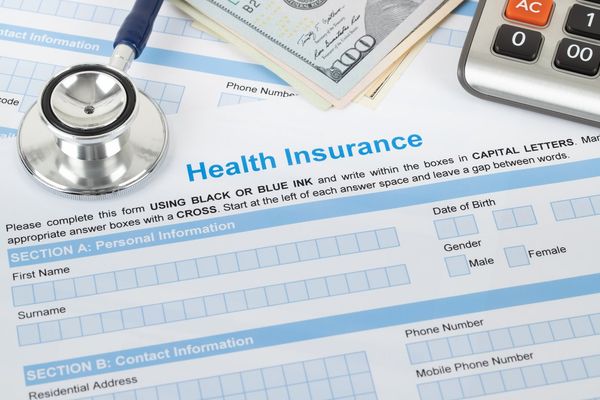February 2, 2024, is National Wear Red Day and February is AmericanHeart Month.
For the more than 60 million women in the United States living with some type of heart disease, navigating health insurance coverage can be overwhelming.
A patient’s journey with heart disease should move seamlessly from diagnosis to treatment, with a strong partnership between the patient and their healthcare provider (HCP). Too often, the HCP’s recommendations must first make it through complicated hurdles put in place by the health plan.
If you have heart disease, it’s important to understand your health insurance and how it works. Knowing what to expect can help you avoid health insurance hassles and heartache.
Heart disease basics
Heart disease affects about 4 out of 10 women in the U.S. and accounts for 1 out of 5 deaths each year, according to the CDC. The American Heart Association reports that an even higher percentage of Black women over age 20 — nearly 6 in 10 — have heart disease and/or high blood pressure.
High blood pressure is just one factor that raises your risk for heart disease. Other factors include:
- High cholesterol
- Diabetes
- Stress
- Depression
- Lifestyle choices such as smoking, not exercising and eating an unhealthy diet
HCPs usually encourage people who are at high risk for heart disease to make lifestyle changes, such as exercising or quitting smoking. But often, these behavior changes aren’t enough. Medicines or surgical procedures can be necessary, too.
Some therapies for heart disease treatment or prevention, such as aspirin, are easy to buy over the counter. Others, such as blood thinners or drugs that lower your cholesterol, need a prescription. Even if your health insurance covers these medicines, you may have trouble getting them. Even after they approve a drug, your plan can change the rules or switch you to a different medication.
Barriers to accessing heart disease treatments
Finding the right treatment can take trial and error. Some medications, such as blood thinners, can have negative side effects. Drugs can work for some people but not others.
According to a survey by the American Society for Preventive Cardiology (ASPC), about 4 out of 10 people taking blood thinners said they had trouble finding a blood thinner that worked for them. A majority said that keeping the blood thinner they’re on is important to them.
Unfortunately, health plans sometimes force patients to switch medicines, a practice called “non-medical switching.” Plans can do this by discontinuing coverage for a certain drug or raising the patient’s costs for that drug.
In the ASPC survey, nearly 4 out of 10 patients whose health insurance had switched their medicine found out about the switch at the pharmacy. About 2 out of 10 people found out through a letter from their health plan.
Being switched off a treatment that is working for you can lead to medical complications, more HCP visits and more trial and error, plus disruptions to everyday life.
Health insurance coverage for heart medications
To navigate health insurance coverage for heart medicines, it helps to understand some basics about how insurers decide which drugs to cover.
The first thing to know is that most health insurers contract with companies called pharmacy benefit managers (PBMs) to provide prescription drug benefits on their behalf.
PBMs negotiate drug prices with drug makers and set lists of drugs a health insurer will cover (sometimes called “preferred drug lists” or “formularies”). Based on those negotiations, PBMs also decide what rules might apply to getting a specific drug and what your costs will be if the drug you need is covered.
Even if the plan covers your medicine, your costs will depend on:
- Drug tier: Within approved lists, drugs are usually grouped by tier. Each tier can have different costs and rules associated with them. Usually, generic drugs are assigned to Tier 1, with lower copayments and fewer, if any, restrictions. More expensive newer, brand-name drugs are usually assigned to a higher tier and carry higher costs and more hurdles to jump through.
- Copayments: The set fee you pay for each prescription can vary depending on which tier your drug is assigned.
- Coinsurance: A percentage of total costs you may have to pay.
- Deductible: If you have a general deductible or a pharmacy-specific deductible, you’ll have to pay the full cost of your drugs until you reach it. After you meet your deductible, copayments or coinsurance apply.
- Out-of-pocket maximum: Luckily, many health plans have a limit on how much you have to pay out of pocket each year. Once you hit that maximum amount, including what you’ve paid toward your deductible, copayments and/or coinsurance, you won’t have to pay anything else for covered services in that benefit year.
Read: Health Insurance 101: Understanding Health Insurance Terms >>
Health plans use certain rules to control access to more expensive drugs. These rules can take many forms. Some common ones include:
- Prior authorization: You have to get the insurer’s permission before they will cover a drug. They review your request to decide if they believe you need the drug and if they think it’s the only or the best option for you. If they deny your request, you can appeal and try to get them to change their decision.
- Step-therapy: You have to try insurer preferred medicines first and show that they don’t work for you before the insurer will approve the drug prescribed by your HCP.
- Quantity or other limits: You can only fill the prescription for a certain period at a time, or you can only get the medicine from a particular source, such as their preferred mail-order pharmacy.
Once you and your HCP decide the right treatment for you, your HCP can help you get through the process. They may need to document why they recommend a certain treatment for you. They may even have to plead your case directly with a HCP from the health plan.
Learning the different rules may feel overwhelming, but knowing the basics can help you stay on top of the process, too.
This educational resource was created with support from BMS.
- The Connection Between Diabetes, Cardiovascular Disease and Women's Health ›
- Did You Know That Heart Disease Affects Women of Color Differently? - HealthyWomen ›






